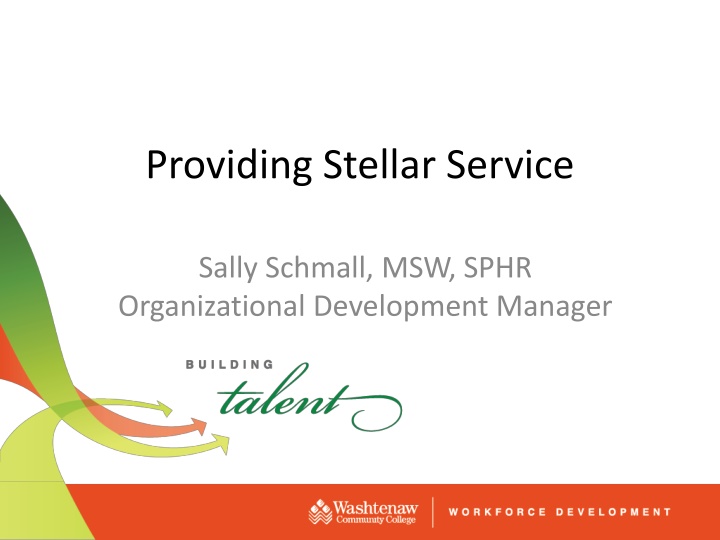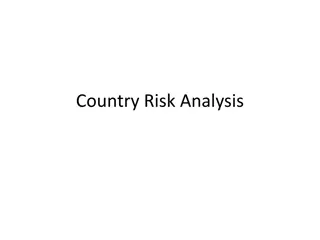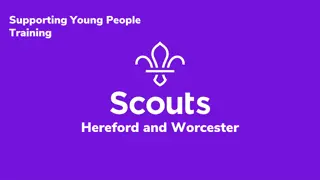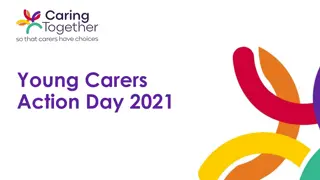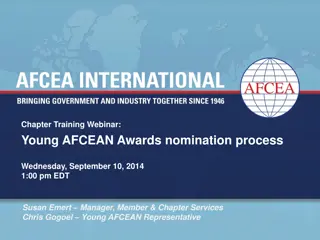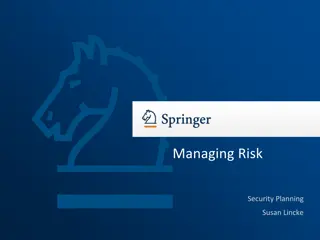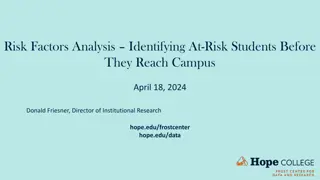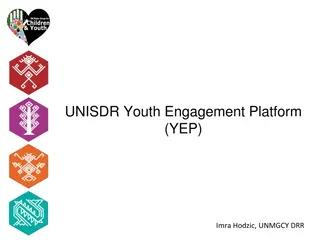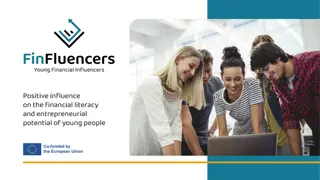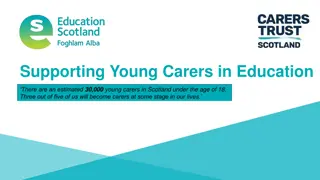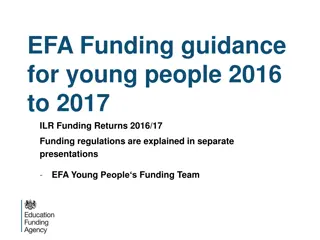Managing Financial Risk for Young People
Explore strategies to identify vulnerable situations and respond to financial exploitation. Learn about fraud, its implications, and how to protect against it. Engage in discussions and activities to enhance financial literacy and safety.
Download Presentation

Please find below an Image/Link to download the presentation.
The content on the website is provided AS IS for your information and personal use only. It may not be sold, licensed, or shared on other websites without obtaining consent from the author.If you encounter any issues during the download, it is possible that the publisher has removed the file from their server.
You are allowed to download the files provided on this website for personal or commercial use, subject to the condition that they are used lawfully. All files are the property of their respective owners.
The content on the website is provided AS IS for your information and personal use only. It may not be sold, licensed, or shared on other websites without obtaining consent from the author.
E N D
Presentation Transcript
Providing Stellar Service Sally Schmall, MSW, SPHR Organizational Development Manager
You are the customer Share your most memorable customer service experience over the past month. Outstanding Customer Service Situation: (adjectives) Unsatisfactory Customer Service: (adjectives) What are the common experiences from both positive and negative situations?
Why does customer service at WCC matter? Customer service expectations from students continue to increase, and it is critical to meet that demand with a strong commitment to developing a culture of service.
What is stellar customer service ? What word best describes stellar customer service? Give an example of stellar service within your area.
Customer Service Report Card When asked to describe how they define stellar customer service, overwhelmingly, the respondents focused on responsiveness. eliminating wait times, shortening lines, and ensuring that students receive the help they want and need Academic Impressions Monthly Diagnostic December 2012
Customer service report card 79 institutions about customer service 29 respondents rated their institution with a B letter grade for customer service 31 would assign a C grade (together accounting for three-quarters of the total responses). Only six would assign an A. What grade would you assign your area? Academic Impressions Monthly Diagnostic December 2012
Identifying the challenges We need a cultural shift; our faculty/staff don t see customer service as necessary. We aren t sure how to audit our current service and identify bottlenecks/gaps. We don t provide effective customer service training.
Culture shift We need to stop thinking about service to the student as an interruption to our work. Service to the student is why we re there. Your #1 priority is taking care of the student. Drill that in. Rick Weems, Southern Oregon U
Culture shift Striving for first-contact resolution. The commitment that in as many cases as possible, the student s inquiry or obstacle will be addressed during their first contact. If the staff member who answers the phone, receives the student s email, or speaks to the student is unable to resolve the issue, they should be able to refer the student immediately to the correct person who can.
Culture shift We hold a "Development Day" where presentations are made by different departments about what that department does & how their responsibilities & actions affect other departments. Having awareness of the "big picture" helps everyone provide better assistance to our students and remind us "why we're here." Mary Briody, Assistant Director of Bursar Operations, Dowling College
Addressing structural barriers Structural barriers occur whenever the process for a student to get from Point A to Point D creates runaround for the student. Runaround is not only students biggest service-related complaint; it is a serious service issue that detracts from students time and attention to their studies.
Addressing structural barriers Students are asked to rate (on a 1-5 Likert scale, with 1 being the lowest rating and 5 the highest) both the importance of a service to their ability to register for, attend, and succeed in their classes, and how well the institution is providing that service to them. The survey is designed to identify the most important gaps in service and assists in prioritizing efforts to improve services.
Where are the bottlenecks? Lay a rope out over the floor, using it to simulate the path a student takes from admission to sitting in the classroom. Points along the rope can represent particular steps. Often there is disagreement among the staff on the sequence of steps. Surfacing these disagreements together can help you identify where in the process students may be left confused or misdirected.
Where are the bottlenecks? Interview a student who recently navigated the process. Interview a first-generation student. Where did they find delays?
Training and time During onboarding, it is critical that new staff meet the right people and get walked through the processes from the student s perspective. Provide cross-training. Incoming student inquiries are likely to be questions related to financial aid. The more that front-line staff across enrollment services can understand and answer basic financial aid questions the better equipped you will be to provide stellar service
Training and time Dedicate consistent, weekly time (30 minutes) to ensure that service-oriented training is an ongoing rather than a one-off effort. Create customer friendly email templates to address the most common questions sent in by students.
Customer service tips View the student as a customer - - without them, there would be no job. When a student is experiencing a problem, it is important to first address the human side of the problem before tackling the business side. Follow up is king!
